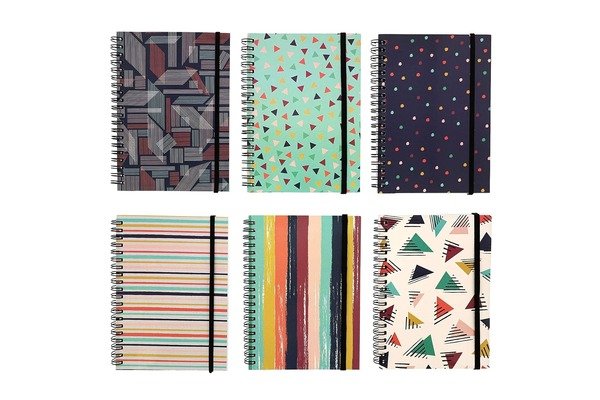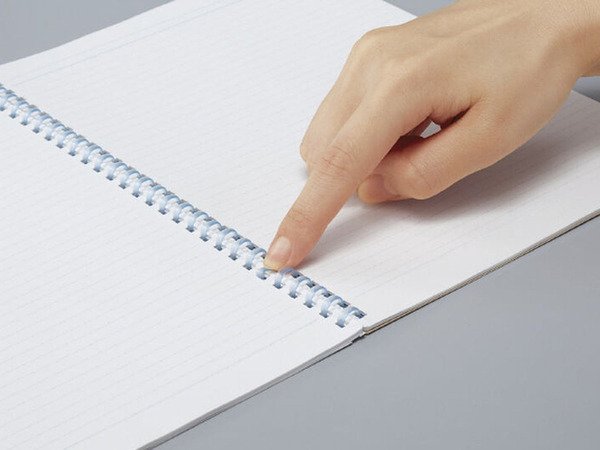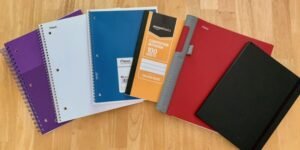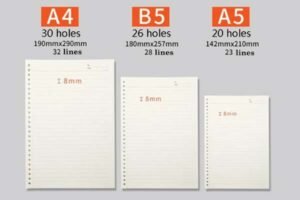
Starting 6th grade is a big step, and getting organized is key. You want your child prepared, but not overloaded with supplies. So, how many notebooks are just right for this new adventure?
For most 6th graders, 5 to 7 notebooks for core subjects, plus a dedicated planner1, is a solid starting point. Always check the school's specific supply list first, as this provides the most accurate number.
The exact number of notebooks really depends on a few things. Schools usually list requirements for core subjects like Math, English, Science, and Social Studies. Some schools might ask for a separate notebook for each of these. Other schools might combine subjects or allow students to use multi-subject notebooks or binders. It's also good to think about any elective classes your child might be taking, as these often need their own notebook too.
So, the "magic number" can shift. If your child's school asks for one notebook per core subject, that's typically four or five right there. Then, add any electives like art, music, or a foreign language. And don't forget a planner or assignment notebook – that's super important for keeping track of homework and deadlines in middle school.
What are the essential types of notebooks for 6th graders?
Beyond just the number, picking the right types of notebooks can make a big difference for a 6th grader. It's about making note-taking and organization easier for them.
Standard spiral-bound or composition notebooks are essential. Consider graph paper notebooks for Math, lined notebooks for English and Social Studies, and a dedicated planner for assignments and deadlines to keep them on track.

Let's dive deeper into the common types and why they work well for 6th grade.
Single-Subject vs. Multi-Subject Notebooks
Many parents and students wonder whether to go for individual single-subject notebooks or larger multi-subject ones.
- Single-Subject Notebooks: These are great for focusing on one topic at a time. They are usually lighter to carry if a student only needs to bring one or two to a specific class. They also make it easy to color-code by subject.
- Multi-Subject Notebooks: These can consolidate notes for several classes into one book, which can be convenient. They often come with built-in dividers. However, they can become quite bulky and heavy if they cover too many subjects. If one section fills up, the whole notebook might need replacing.
Ruling Types Matter
The lines on the paper inside the notebook are also important. Different subjects benefit from different rulings.
| Subject | Recommended Ruling | Why It's Useful |
|---|---|---|
| Math | Graph/Quad Ruled | Helps align numbers, draw graphs, and create diagrams. |
| English/Lang. Arts | Wide or College Ruled | Provides clear lines for writing essays and notes. |
| Science | Lined or Graph Ruled | Good for lab notes, observations, and diagrams. |
| Social Studies | Lined | Ideal for taking notes, writing summaries, and timelines. |
As a manufacturer, we often see schools request 80gsm paper for standard notebooks as it offers a good balance of quality and writability without too much ink bleed-through. For students who prefer thicker paper, 100gsm is a great upgrade.
The Importance of a Planner
A dedicated planner or assignment notebook is a must-have for 6th graders. This is where they'll write down homework, project due dates, and test schedules. It’s a key tool for developing time management and organizational skills. Some planners come with weekly and monthly views, which is very helpful.
Durability and Size
Sixth graders can be tough on their supplies. Look for notebooks with durable covers2, like poly (polypropylene) covers, which are water-resistant and tear-proof. Sturdy spiral bindings or well-sewn composition books will last longer. Common sizes are A5 (smaller, more portable) or Letter size (standard US school size).
How can I choose the right notebooks to help my 6th grader stay organized?
Choosing notebooks isn't just about having enough; it's about setting your 6th grader up for organizational success. The right choices can make a big difference.
Opt for notebooks with different colored covers for each subject. Select sturdy, durable notebooks that can handle daily use. Consider features like pockets for loose papers to boost organization.

Let's break down some strategies to help your child stay organized with their notebooks.
The Color-Coding Strategy
This is a simple but very effective trick.
- Assign a specific color to each subject: For example, blue for Math, red for English, green for Science, and yellow for Social Studies.
- This visual cue helps students quickly grab the correct notebook for class or when packing their bag for homework.
- It makes it easier to find what they need in their locker or backpack.
Look for Durability Features
A notebook that falls apart mid-year creates more hassle than it's worth.
- Sturdy Covers: As mentioned, poly covers are fantastic. Thick cardstock covers can also work if they are laminated or coated.
- Strong Binding: For spiral notebooks, check that the wire coil is robust and not easily bent. For composition books, ensure the sewn binding is tight. Our patented "seamless coil" technology, for instance, ensures a smooth touch and prevents snagging.
- Paper Quality: Paper that is too thin can tear easily or allow ink to bleed through, making notes messy. We typically recommend 80gsm as a good standard, but 100gsm offers extra durability.
Pockets and Dividers
These little extras can be organizational lifesavers.
- Built-in Pockets: Some spiral notebooks come with a pocket page, perfect for stashing handouts, returned quizzes, or loose notes until they can be filed properly.
- Dividers: If using a multi-subject notebook or a binder, make sure it has clear, sturdy dividers for each subject.
Consider Eco-Friendly Choices
Teaching kids about sustainability can start with their school supplies.
- Recycled Paper: Many notebooks are available with recycled paper content. We offer recycled paper options at no surcharge.
- FSC™ Certification: Look for products with FSC™ (Forest Stewardship Council) certification, like many of ours (C106904). This means the paper comes from responsibly managed forests.
Are there alternatives to traditional notebooks for 6th graders?
While traditional notebooks are a staple, it's worth knowing about other options available for today's 6th graders. Each has its own set of benefits.
Yes, binders with loose-leaf paper offer great flexibility for organizing subjects. Digital note-taking on tablets or laptops is also an option, though many schools still prefer physical notebooks for focused learning.

Let's explore some popular alternatives and how they compare.
Ring Binders: Pros and Cons
Ring binders are a very common alternative, especially in middle and high school.
- Pros:
- Customizable: Students can add, remove, and rearrange pages easily.
- Subject Organization: Dividers make it easy to separate subjects within one binder.
- Accessory Compatible: They can hold hole-punched handouts, pocket folders, and pencil pouches. We manufacture metal binders that are compatible with international standards like Filofax, Campus, and standard 3-ring systems. Our 304 stainless steel binder rings are built for durability.
- Cons:
- Bulkiness: Binders can get heavy and unwieldy if overstuffed.
- Page Durability: Loose-leaf paper can tear out of the rings if not reinforced.
- Mess Factor: Without discipline, pages can end up in the wrong sections or become disorganized.
Digital Note-Taking: A Growing Trend
With more schools adopting technology, digital note-taking is on the rise.
- Pros:
- Searchable: Notes can often be easily searched.
- Multimedia: Students can incorporate images, audio, and web links.
- Cloud Backup: Less risk of losing notes if synced to the cloud.
- Editing: Easy to edit and reorganize text.
- Cons:
- Distractions: Devices can offer many distractions (games, social media).
- Screen Time: Increases overall screen time.
- School Policies: Not all schools or teachers allow devices for note-taking in class.
- Learning Curve: Some students may need time to learn effective digital note-taking strategies.
- Handwriting Benefits: Some studies suggest handwriting notes aids retention better than typing for certain types of learning.
The Hybrid Approach
Some students find success with a combination of methods. For example:
- Using traditional notebooks for in-class notes and problem-solving (especially in subjects like Math).
- Using a binder for organizing handouts and printed materials.
- Using digital tools for research, writing papers, or collaborative projects.
Ultimately, the best alternative depends on the school's policies, the teacher's preferences, and the student's own learning style and organizational habits.
Looking for Quality Notebooks for Your Students or School?
Finding the right notebooks is an important part of preparing for the school year. If you're a parent looking for a few durable options, or a school administrator like Sarah Müller in Germany needing campus notebooks that meet EU eco-labels, or even a corporate gift company founder like James Wong in Singapore searching for customizable binder sets, we can help.
At NotebookRing®, we've been manufacturing professional notebooks and binders since 2006. We offer a wide range of customization options, from cover processes like hot stamping and laser engraving to various paper types (including 80-120g acid-free paper, recycled paper, and even premium Japanese Tomoe River paper) and binding methods. We specialize in industry solutions, including bulk customized school badge notebooks for educational institutions. Our products meet ISO 9001, FSC™, and BSCI standards, and we support flexible order quantities, starting from sample orders of 100 basic notebooks.
Conclusion
For 6th grade, aim for about 5-7 subject notebooks and a planner. Always check school lists first. Focus on durability, organization features, and your child's needs for a successful year.





